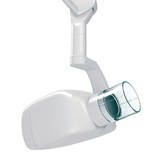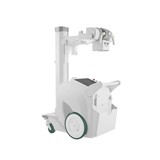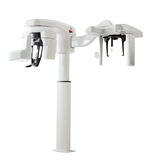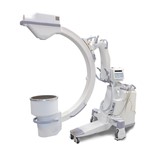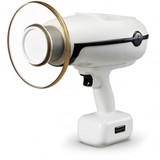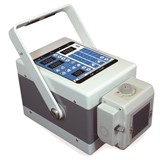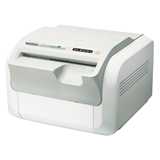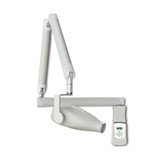In the realm of advanced imaging technology, the selection of an appropriate X-ray machine is a pivotal decision that demands careful consideration. Whether the intention is medical diagnosis, industrial testing, or security screening, the right choice can significantly impact the quality of results, operational efficiency, and even long-term financial implications. This comprehensive buying guide is designed to equip you with the essential insights required to make informed decisions when acquiring an X-ray machine. Maintaining an informative, professional, and objective tone, this guide will delve into the technical aspects while ensuring clarity and conciseness.
I. Determining Intended Use
X-Ray machines serve a multitude of purposes across distinct sectors, each requiring specific features and functionalities. By accurately identifying the intended application, you can tailor your choice to meet the unique demands of your field.
A. Classifying X-Ray Machine Applications: Medical, Industrial, Security
- Medical X-Ray Machines: These machines play a crucial role in the healthcare industry, aiding in the diagnosis and monitoring of various medical conditions. They encompass a wide range of modalities, from traditional radiography to advanced computed tomography (CT) scanners.
- Industrial X-Ray Machines: Primarily employed for non-destructive testing (NDT) and quality control in industrial settings, these machines provide insight into the internal structure of objects, identifying defects and irregularities that might remain invisible to the naked eye.
- Security X-Ray Machines: Commonly used in transportation hubs, public venues, and high-security facilities, these machines offer rapid and efficient screening for potential threats and contraband items.
B. Aligning Machine Specifications with Specific Use Cases
Tailoring the X-ray machine's specifications to the particular requirements of your intended application is paramount. For instance, medical imaging demands high-resolution images, while industrial applications might prioritize penetration capabilities to examine dense materials.
C. Ensuring Compliance with Relevant Regulations and Standards
Different sectors are subject to distinct regulations governing radiation safety, image quality, and operational protocols. Prior to making a purchase, it is essential to verify that the chosen X-ray machine complies with the relevant standards set forth by regulatory authorities in your industry.
II. Evaluating Power Requirements and Space Constraints
When embarking on the journey to acquire an X-ray machine, it's imperative to delve into the technical aspects that ensure optimal functionality and integration within your environment. Two fundamental aspects that demand meticulous evaluation are power requirements and space constraints.
A. Calculating Power Consumption and Electrical Compatibility
Power consumption is a critical factor that influences both the operational costs and the technical feasibility of an X-ray machine. To ensure that the chosen machine aligns with your facility's power infrastructure, it's essential to calculate its power requirements accurately. X-ray machines vary in their energy demands, often contingent on factors such as imaging technology and processing capabilities. By collaborating with an electrician or a relevant technical expert, you can accurately gauge your facility's electrical capacity and ascertain the compatibility of the prospective machine.
B. Analyzing Available Space for Installation and Operation
The physical dimensions of an X-ray machine hold substantial importance, especially in settings where space is at a premium. Before making a purchase, it's crucial to measure the area designated for the machine's installation. Account for not only the machine's core unit but also its associated components, such as control panels, monitors, and any required accessories. Taking precise measurements and factoring in clearance spaces will prevent inconveniences post-purchase and streamline the installation process.
C. Addressing Cooling and Ventilation Needs for Efficient Performance
The operation of an X-ray machine generates heat, necessitating adequate cooling and ventilation mechanisms. Inadequate heat dissipation can lead to reduced performance, increased downtime, and potential malfunctions. Prior to acquiring a machine, evaluate the existing ventilation infrastructure in your facility. Adequate airflow and temperature control are imperative to maintain consistent and reliable performance. Collaborating with HVAC professionals can aid in designing an environment that promotes optimal functioning and longevity of your chosen X-ray machine
III. Budget Considerations and Cost Factors
When embarking on the journey of purchasing an X-ray machine, understanding the financial aspects is crucial. This section will delve into the monetary considerations that come into play during the decision-making process.
A. Identifying Initial Costs vs. Long-Term Operational Expenses
- Initial Investment: The upfront cost of acquiring an X-ray machine encompasses various factors such as the machine type, specifications, and brand. It's essential to balance the initial expense with the long-term benefits the machine will provide.
- Operational Expenses: Beyond the initial investment, consider the ongoing costs associated with operating the X-ray machine. These include maintenance, servicing, consumables, and potential repairs. Accurate estimation of these operational expenses is vital for budget planning.
B. Exploring Financing Options and Return on Investment
- Financing Possibilities: Given the substantial capital required for X-ray machines, exploring financing options can be prudent. Leasing, equipment financing, or equipment loans are avenues to consider. Each option has its own implications, and it's recommended to assess the terms and conditions carefully.
- Return on Investment (ROI): Calculating the ROI is imperative to gauge the economic viability of the investment. Evaluate how the X-ray machine will contribute to revenue generation, cost savings, or improved outcomes. A favorable ROI justifies the initial and ongoing expenditures.
C. Weighing Costs Against Desired Features and Performance Levels
- Feature Prioritization: Different X-ray machines offer a spectrum of features, some of which may be essential to your intended use, while others might be optional. Prioritize features that directly align with your requirements and avoid unnecessary expenses on features with marginal utility.
- Performance Alignment: The performance levels of X-ray machines can vary widely, affecting image quality, speed, and efficiency. Assess the performance attributes that align with your use case. Avoid overinvesting in performance capabilities that exceed your actual needs.
IV. Understanding Different X-Ray Machine Types
X-ray technology has evolved significantly since its discovery, leading to the development of various specialized machines tailored for distinct applications. Each type of X-ray machine serves a unique purpose and offers specific features that cater to diverse industries. In this section, we will delve into the different categories of X-ray machines, outlining their functionalities, benefits, and considerations.
A. Radiography X-Ray Machines: Conventional Film and Digital Systems
Radiography X-ray machines are perhaps the most commonly recognized form of X-ray technology. They are extensively used in medical diagnostics, industrial testing, and more. Two primary subcategories within radiography include conventional film-based systems and modern digital systems.
Conventional Film X-Ray Machines
Conventional film X-ray machines utilize X-ray-sensitive films to capture images. These images are developed in a darkroom before being analyzed. While these systems have been widely used historically, they are gradually being replaced by digital alternatives due to their limitations in terms of image processing speed, storage, and distribution.
Digital Radiography (DR) Systems
Digital radiography has revolutionized the imaging landscape. DR systems capture X-ray images digitally, allowing for rapid image acquisition, manipulation, and storage. These systems provide improved image quality, reduced radiation exposure, and the convenience of electronic data transfer, enhancing workflow efficiency in both medical and industrial settings.
B. Computed Tomography (CT) Scanners: 2D and 3D Imaging Capabilities
Computed Tomography, commonly referred to as CT scanning, offers advanced imaging capabilities that go beyond traditional X-ray. CT scanners utilize a rotating X-ray source and detectors to create cross-sectional images of the body or object being scanned. CT scans provide detailed insights into internal structures and can produce both 2D and 3D images.
2D Imaging
CT scanners excel in capturing detailed cross-sectional images of the body or object. These 2D images allow medical professionals and engineers to analyze specific layers and structures, aiding in accurate diagnoses and evaluations.
3D Imaging
One of the most remarkable features of CT scanning is its ability to reconstruct 3D images from multiple 2D slices. This capability is invaluable in medical planning, allowing surgeons to visualize complex anatomical structures before procedures. In industrial applications, CT 3D imaging enables precise dimensional analysis and flaw detection in manufactured components.
C. Fluoroscopy X-Ray Machines: Real-Time Imaging for Medical Procedures
Fluoroscopy X-ray machines provide real-time moving images of internal structures. This technology is extensively used in medical procedures that require dynamic visualization, such as cardiac catheterization, gastrointestinal studies, and orthopedic interventions.
Dynamic Imaging
Fluoroscopy's real-time imaging capabilities are achieved by continuously emitting X-rays while a contrast medium, often containing iodine or barium, is introduced into the body. The resulting images are displayed on a monitor, enabling physicians to observe the flow of the contrast medium and the movement of internal structures.
Medical Interventions and Guidance
Fluoroscopy plays a crucial role in guiding minimally invasive procedures. Physicians can accurately guide catheters, stents, or needles to precise locations within the body, reducing the invasiveness of the procedure and enhancing patient safety.
D. Industrial X-Ray Machines: Non-Destructive Testing and Quality Control
Industrial X-ray machines are essential tools in non-destructive testing (NDT) and quality control processes across various industries. These machines enable the inspection of internal structures of manufactured components without causing damage.
- Defect Detection
Industrial X-ray systems are employed to detect defects, such as cracks, voids, and inclusions, in manufactured items like welds, castings, and electronic components. This non-destructive approach ensures that critical components meet quality standards without compromising their integrity. - Efficiency and Cost Savings
By identifying defects early in the manufacturing process, industrial X-ray machines contribute to reduced material waste, rework, and the prevention of costly product failures. Industries such as aerospace, automotive, and electronics heavily rely on these systems to maintain product excellence.
E. Security X-Ray Machines: Screening for Threats and Contraband
Security X-ray machines play a pivotal role in safeguarding public spaces, transportation hubs, and critical infrastructure by detecting prohibited items and potential threats.
- Baggage and Parcel Inspection
Security X-ray machines scan baggage, parcels, and personal belongings using a conveyor system. These machines create detailed images that security personnel analyze to identify suspicious items, such as weapons, explosives, and illicit substances. - Body Scanners
Body scanners, often used at airports and high-security facilities, employ X-rays to create images of a person's body, revealing any concealed objects or anomalies. Privacy concerns are addressed through advanced technologies that generate generic avatars instead of detailed images.
Conclusion
The world of X-ray machines is a testament to human ingenuity and technological progress. From traditional radiography to cutting-edge CT scanners, fluoroscopy systems, industrial tools, and security equipment, each type of X-ray machine serves a critical role in its respective field. Understanding the distinctive features and applications of these machines is paramount for making informed decisions tailored to specific needs and industries. The subsequent sections of this guide will delve deeper into the key features, benefits, and considerations when choosing an X-ray machine, ensuring that your investment aligns seamlessly with your requirements.


















